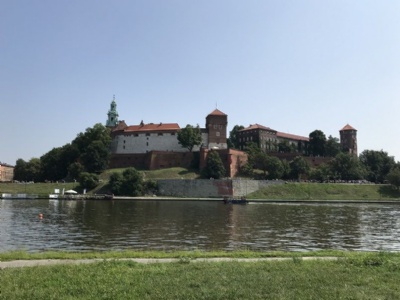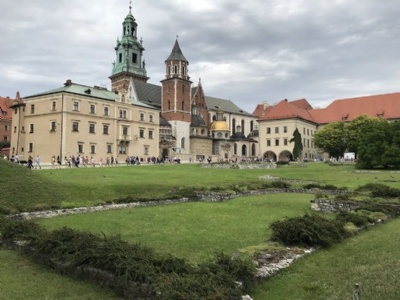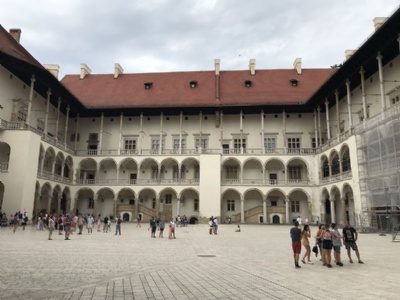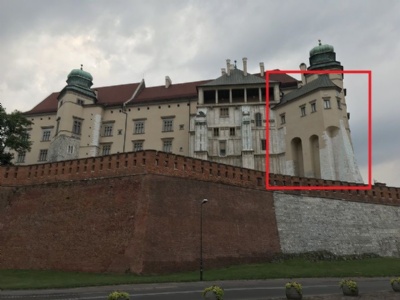Krakow – Wawel
The Wawel castle in central Krakow began to be built in the 1200s and was until the late 1700s the residence of the Polish kings and a symbol of Polish state power. After Poland was divided between Germany and the Soviet Union in September 1939, Krakow became the capital of what the Germans called the General Government (GG). In October 1939, Hitler appointed Hans Frank as governor-general of the GG and he placed his position in Wawel. He set up his office in a part of the castle called Kurza Stopa and part of the lower floor of the castle. He also had a new study built for himself.
Hans Frank was born in Karlsruhe in 1900 and participated in the First World War. He studied lawy and joined the Nazi party in 1921, becoming one of the earliest members and participated in the 1923 November coup attempt. As a lawyer, he became the party’s expert and also Hitler’s personal legal adviser. When Hitler was appointed Chancellor in January 1933, Frank was appointed justice minister in Bavaria, he was also the leader of the National socialist law society and president of the German law academy. Frank was married to Brigitte Herbst in 1925, with whom he had five children.
Frank was a convinced loyal Nazi and came to rule the GG with a brutality that gave him the nickname, Poland’s butcher. He saw himself as the new king of Poland. He did not hide the fact that the Jews were the scum of the earth and that they should be exterminated once and for all. The fact that four out of six extermination camps were located within GG was no coincidence. It was certainly not Frank who built or ordered them, but as GG’s chief civile leader and violent anti-Semite, he had no objection that they were built. Rather, on the contrary, he welcomed them because they were in line with his own wishes for the destruction of the Jews. Any objections from the top civilian leadership were therefore not to be expected.
The Poles were also seen as inferior and would be enslaved and serve the German masters. He saw it as his task to implement this in GG and therefore bears a great responsibility for the fate, not only what happened to the Jews in GG, but also to the rest of the population. As governor general, Frank became one of the most powerful leaders in Nazi Germany. Frank remained as governor-general until 1944, when the Germans were forced to retreat before the approaching Soviet Red Army. Frank fled westward and was arrested in Tegernsee, southern Bavaria, on May 4, 1945. He was one of 21 main accused who was tried in Nuremberg, convicted of war crimes and crimes against humanity and sentenced to death. The sentence was executed on October 16, 1945.
Current status: Preserved with museum (2019).
Address: Wawel 5, 31-001 Kraków.
Get there: Walk from central Krakow.
Follow up in books: O´Connor, Garry: The Butcher of Poland: Hitler’s Lawyer Hans Frank (2013).




Wawel is a museum and Krakow’s largest tourist attraction focusing on the Kings. That the castle was Hans Frank’s headquarters during the war is possibly mentioned randomly by some guide. Frank’s former office is now a library. The other rooms used by his office bear no trace of the Nazi past.